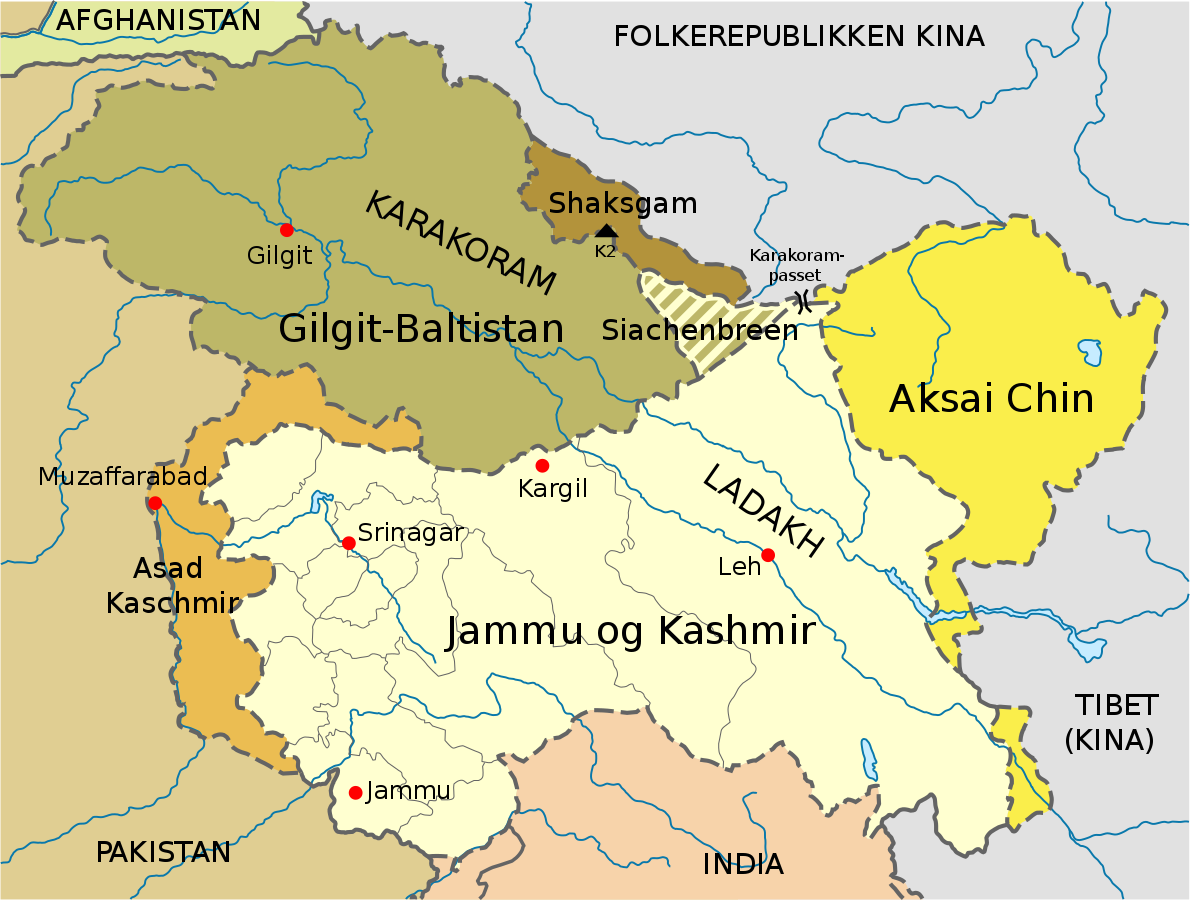Table of Contents
India has lodged a strong protest with China for carrying out construction activities in the Shaksgam valley, in an “illegal” attempt to alter the situation on the ground. Recent satellite images show China building a road reaching lower Shaksgam Valley, less than 50 km from the Siachen glacier held by India.
Shaksgam Valley
The Shaksgam Valley, also known as the Trans-Karakoram Tract, is a territory of about 5,200 square kilometres (2,000 sq mi) located north of the Karakoram watershed in the Kashmir region. It is currently administered by China as part of its Xinjiang Uyghur Autonomous Region.
The Shaksgam Valley is a source of contention between India, Pakistan, and China. India claims the entire Kashmir region, including the Shaksgam Valley. Pakistan controls a portion of Kashmir known as Gilgit-Baltistan, which includes the Shaksgam Valley. In 1963, Pakistan ceded control of the Shaksgam Valley to China as part of a boundary agreement. India has never accepted this agreement and continues to claim the Shaksgam Valley as its territory.
Shaksgam Valley on Map
China Builds Illegal Road Near India’s Siachen in Pakistan’s Occupied Kashmir Shaksgam Valley. Check here location of Shaksgam Valley on Map given below.

Details of Shaksgam Valley
- Shaksgam Valley is a high-altitude desert valley with an average elevation of over 4,500 meters (14,764 ft).
- The valley is bordered by the Karakoram Mountains to the south and the Kunlun Mountains to the north.
- The climate of the Shaksgam Valley is harsh and cold, with long winters and short summers.
- The valley is sparsely populated, with only a few nomadic herders living in the region.
Importance of Shaksgam Valley
The Shaksgam Valley has some strategic importance due to its location on the border between China and Pakistan. The valley provides a potential route for a road connecting China to Pakistan. China has been investing in infrastructure development in the Shaksgam Valley in recent years, including the construction of roads and bridges. This development has raised concerns in India about China’s growing influence in the region.
The Shaksgam Valley’s importance stems from a confluence of geographical and political factors:
-
Strategic Location: Situated at the intersection of the Karakoram and Kunlun mountains, the Shaksgam Valley borders both China and Pakistan. This makes it a potentially vital link for a road corridor connecting China’s Xinjiang province to Pakistan. China has been actively building infrastructure in the region, which India views with concern as it bolsters China’s strategic presence near its borders.
-
Disputed Territory: India claims the entire Kashmir region, including Shaksgam Valley. However, in 1963, Pakistan ceded control of the valley to China. This agreement is not recognized by India, leading to an ongoing territorial dispute.
-
Siachen Glacier: The Shaksgam Valley lies adjacent to the Siachen Glacier, the world’s highest battleground. Control of Shaksgam gives China a strategic advantage in the region, potentially threatening Indian positions in the Siachen sector.
-
Military Significance: Due to its high altitude and proximity to disputed borders, the Shaksgam Valley holds significance for military deployment and maneuvering. China’s infrastructural development in the valley is seen by India as a potential military build-up.


 Places in News for UPSC 2025 for Prelims...
Places in News for UPSC 2025 for Prelims...
 New Phase of Operation Chakra to Combat ...
New Phase of Operation Chakra to Combat ...
 Soyuz Aircraft: History, Design and Sign...
Soyuz Aircraft: History, Design and Sign...





















